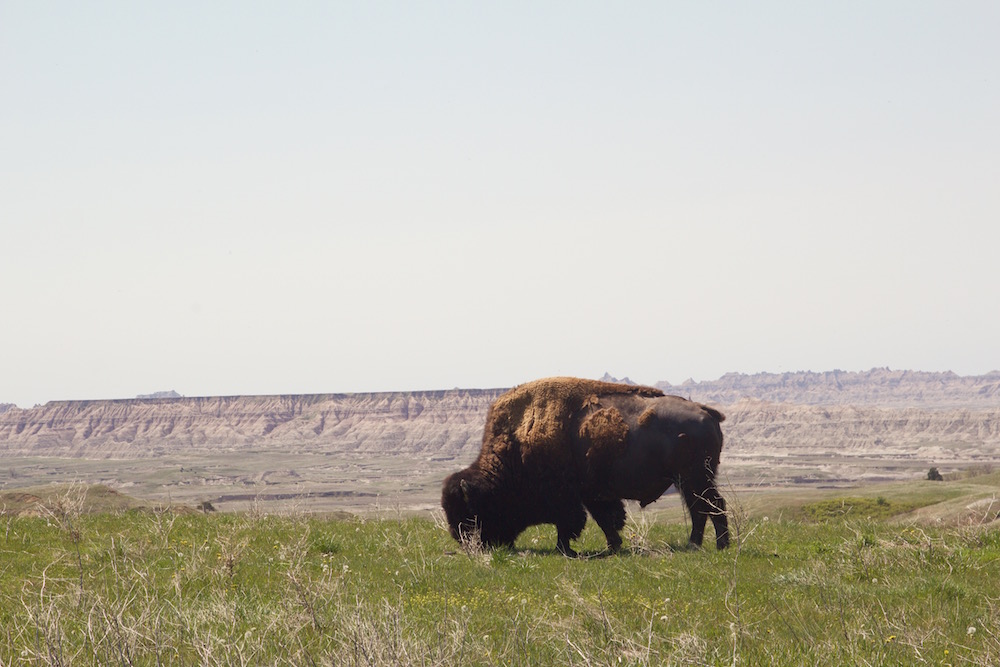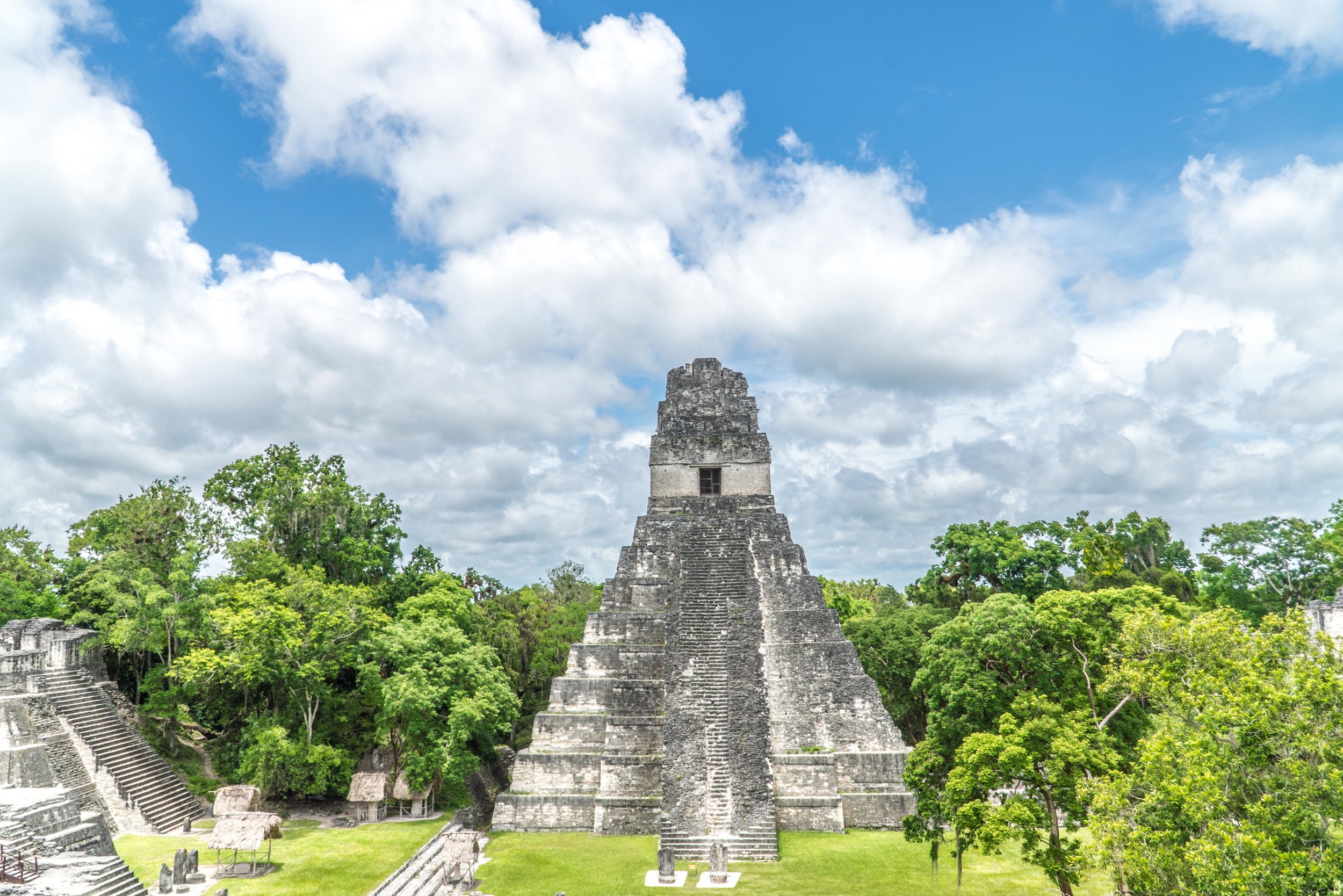My Top National Parks in America
Ladies and gents, dust off your fine china, pull out that fancy bottle of bubbles, and let's pop some bottles dust off your camp cookware, run to the store for a cheap six-pack, and let's pop open some cans because the National Park Service turns 100 this week! Or perhaps, ya know, just go visit national parks this weekend, since they are free for the National Park Service's 100th anniversary.
Anyone who knows me probably knows that I love national parks. My love for our parks is on par with my love for sunsets and cocktails. While I grew up in the south, which has a much lower concentration of national parks than other regions, I was fortunate to have two travel-loving parents who introduced me to the national parks at a young age. This culminated with what my father called my "Senior Trip," the summer before my last year of high school, in which we drove more than 6,000 miles around the U.S., hitting the Grand Tetons, Yellowstone, Badlands, Rockies, Great Smokies, and the Grand Canyon (where they even accidentally left me...for about a minute). 6,000 miles, 25 states, 3 weeks. It was simultaneously the trip from hell and the trip of a lifetime.
But that trip really turned me onto travel, and especially travel in America. Once you get beyond the concrete jungles and gridlocks, America really has beautiful landscapes that are unparalleled. And I believe that the national park system has been one of America's greatest successes, helping conserve and protect a country and world that is becoming increasingly more difficult to conserve and protect. It's not just anywhere that you can hike up volcanoes, sail through ice fields, explore caves, and stand in front of glaciers. Yet these are the types of experiences that our national parks affords.
As such, with the National Park Service's birthday this week, I wanted to take a moment to share about a few of my favorite national parks in America.
13 U.S. National Parks
Grand Canyon National Park, Arizona. Alright, so perhaps there's not a national park in the world that's more well known than Grand Canyon National Park in Arizona. But it's for good reason. A UNESCO World Heritage Site, the Grand Canyon's numbers don't lie about its grandeur, such as being 277 miles long, up to 18 miles wide, and 6,000 feet deep (that's a mile for those keeping track at home). Now that's a canyon. Some unique weather phenomenon take place at the Grand Canyon, too, such as temperature inversions, when fog fills the canyon. Needless to say, the Grand Canyon has earned the name.
Yellowstone National Park, Wyoming. Wyoming's Yellowstone National Park was one of my first national park loves, along with the neighboring Grand Teton National Park, when I visited them both as a teenager. It was here that I began to appreciate the sheer beauty of the American West. One moment you're driving through an unsuspecting forest, and the next waiting for moose to cross the road, and moments later watching geysers erupt from the largest geyser field in the world. Interestingly enough, Yellowstone National Park was actually the first national park in the world, established in 1872, and its history and experiences don't disappoint. I consider it the do-everything national park, since you have everything from wildlife to hiking trails to waterfalls to roaring rivers to natural phenomenons. Best national park ever?
Glacier Bay National Park, Alaska. Like the Grand Canyon, Glacier Bay National Park has earned its name, since it's just that, a bay filled with glaciers and icebergs. While Glacier Bay's terrain is unique in and of itself, also unique is its accessibility, or rather lack thereof, since there are no roads that go into the national park. Most visitors enter it by boat or ship, with a number of cruise ships entering the bay on Alaskan cruise itineraries. Among the most visited glaciers are Margerie and Lamplugh Glaciers, while for a more unique experience, there are small boat tours, and even guided kayak trips that tour Glacier Bay National Park. Keep your eyes peeled for bears.
Grand Tetons National Park, Wyoming. Bordering Wyoming's Yellowstone National Park is easily one of my top favorite national parks in America, Grand Teton National Park. I'm simply captivated by the calmness of Jackson Lake against the backdrop of the stark Teton Mountain Range. Not to mention that the Grand Teton's wildlife game is on point; it's not unusual to see a number of unique animals, such as elk, bison, antelope, moose, and if you're lucky, bears. Bonus points that the Grand Tetons are mere miles away from one of my favorite mountain towns, Jackson, Wyoming.
Badlands National Park, South Dakota. Characterized by tall, otherworldly rocky buttes, pinnacles, and spires, there's nothing bad about South Dakota's Badlands National Park. Located in Southwestern South Dakota, Badlands National Park sits on nearly 250,000 acres of protected land, and though most known for its rocky landscape, has other unique features like the largest undisturbed mixed grass prairie in the United States and a population of the black-footed ferret, which is one of the most endangered land mammals in North America. However, the wildlife you're probably most likely to see is prairie dogs, bison, and pronghorns.
Great Basin National Park, Nevada. Continuing with the otherworldly national park theme is Great Basin National Park in Nevada, which I consider one of the most underrated national parks in America. Like many of the national parks here, Great Basin National Park has features that you just can't find anywhere, such as one of the southernmost glaciers in America, and bristlecone pines, which are considered the oldest living things in the world. Great Basin National Park is also home to a cave system, Lehman Caves, which is open for visitors to take ranger-led tours. It's like the Disney of national parks.
Great Smoky Mountains National Park, Tennessee. Great Smoky Mountains National Park feels a little bit like my home national park since I went to college in the Western North Carolina mountains not far from it. And it couldn't feel anymore southern, especially in nearby Gatlinburg, where moonshine distilleries and kitschy shops line the main drag just a few minutes from one of the Great Smoky's entrances. Once inside the park, you're greeted with great hikes, beautiful waterfalls, and panoramic overlooks of the Great Smokies. My favorite part of Great Smoky Mountains National Park is Cades Cove, which is an 11-mile loop, where you'll often see wildlife, such as black bears, white-tail deer, and the occasional coyote.
Glacier National Park, Montana. Glacier National Park is without a shadow of a doubt, my favorite national park in America. Simply put, it's stupid-beautiful. Glacier National Park is just that, a national park dotted with glaciers (though much fewer than there were decades ago), that's reminiscent of scenery from the European Alps and not Big Sky Country. Naturally, the main attraction of Glacier National Park is the glaciers, of which I favor the Many Glacier region, which is home to lakes, numerous hikes, and Many Glacier Hotel. Not to be missed is the Going-to-the-Sun Road, easily one of the most beautiful mountain drives in America.
Redwood National and State Parks. Yes, national and state parks in one. Well kind of. Redwood National and State Parks consists of a series of old-growth temperate rainforests along the coast of Northern California, comprising of Redwood National Park and Del Norte Coast, Jedediah Smith, and Prairie Creek Redwoods State Parks. They are kind of the Rivendell of the West Coast, located along one of my favorite sections of the California coast that many people never discover, hence the name of a portion of the nearby coast dubbed the "Skeleton Coast." While you don't get the wildlife of many of the other parks, what you do get are groves of the tallest trees in the world, and great hiking trails set amidst them. The Smith River, the largest free-flowing river in California, also offers guided kayak trips during the summer.
Haleakalā National Park, Hawaii. You guys, there are national parks with volcanoes in America. Volcanoes! Haleakalā National Park, located on my favorite Hawaii island, Maui, stands towering over the island at more than 10,000 feet tall. But don't worry, it's dormant. But there are few things more beautiful in America than sitting on top of a volcano as the sun comes up in the morning with clouds below you. But while seeing Haleakalā from its base or summit is extraordinary in and of itself, perhaps the most unique experience is being able to paraglide off it, which you can do with Proflyght Paragliding, flying from the slopes of Haleakalā.
Hawaii Volcanoes, Hawaii. That's right, more volcanoes! If you really want an otherworldly, volcanoes experience, then head to Hawaii the Big Island, where you'll find a number of volcanoes around the island, including two active volcanoes, Kīlauea, one of the world's most active volcanoes, and Mauna Loa. Hawaiʻi Volcanoes National Park features varied terrain, from lush rainforest to small portions of it covered in flowing lava. For a bird's-eye view, take a helicopter tour of Hawaii Island's volcanoes, which I've done with Blue Hawaiian Helicopters.
Joshua Tree National Park, California. Joshua Tree National Park on paper doesn't seem like much, located in Southeastern California and part of two deserts, the Mojave and Colorado. However, this California national park has game, featuring unique terrain you won't just find in any national park, including scores of Joshua trees, which you'll largely only see in this region of the world. Also unique is the San Andreas Fault, which can be seen on the valley floor. Lastly, if you love night and sky photography, it doesn't get much better than Joshua Tree National Park.
Yosemite National Park, California. Last, but not least, is Yosemite National Park in Northern California. Dating back to the late-1800s, Yosemite National Park is steeped in history, and is believed to have been inhabited for thousands of years. It got put on the map, however, in the 1800s, largely because of the California Gold Rush in the mid-1800s. A couple years later it started seeing tourists, and then a few decades later, in 1890, made a national park. Yosemite National Park can really only be described as stupid-beautiful. It's marked by beautiful natural features like numerous waterfalls, large granite cliffs, rolling mountains, and sequoia groves. This isn't your everyday national park.
What's your favorite national Park?
























